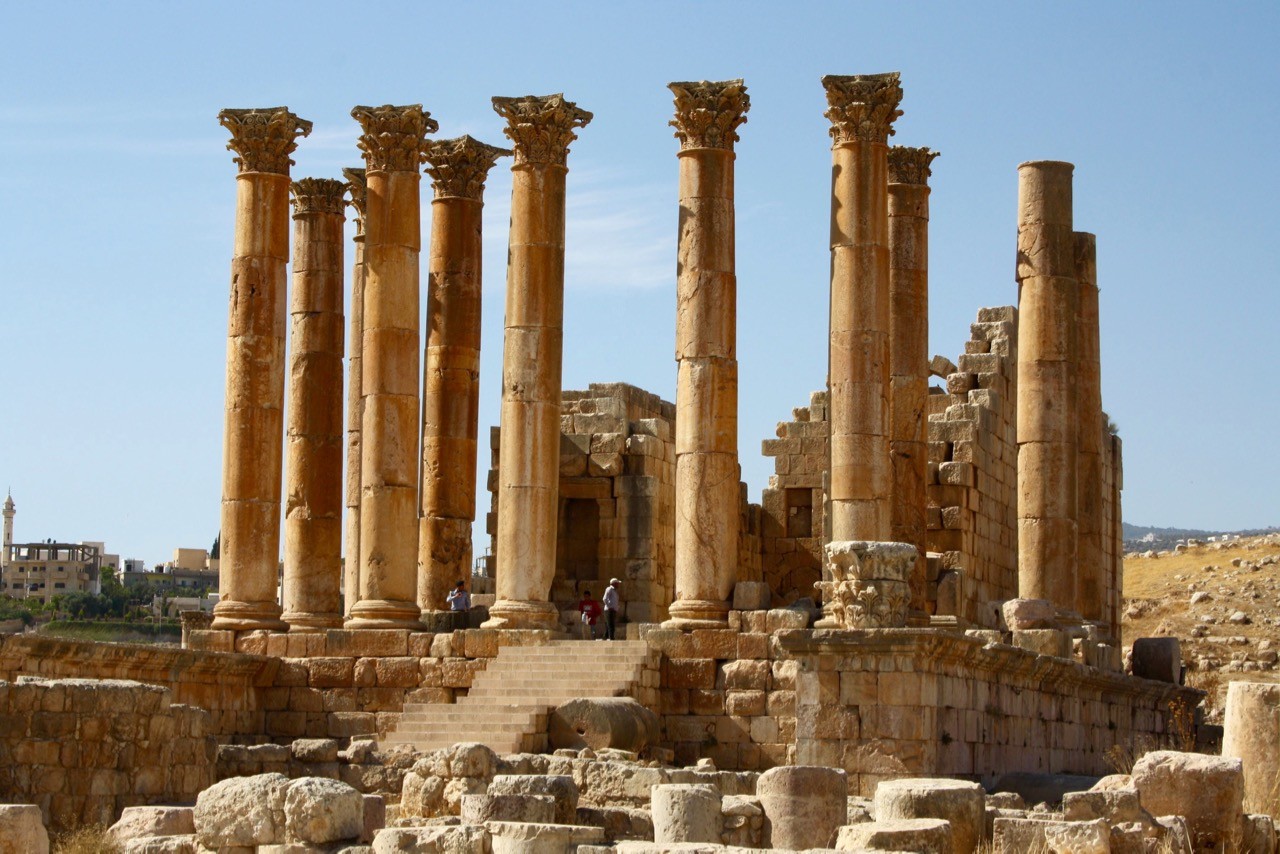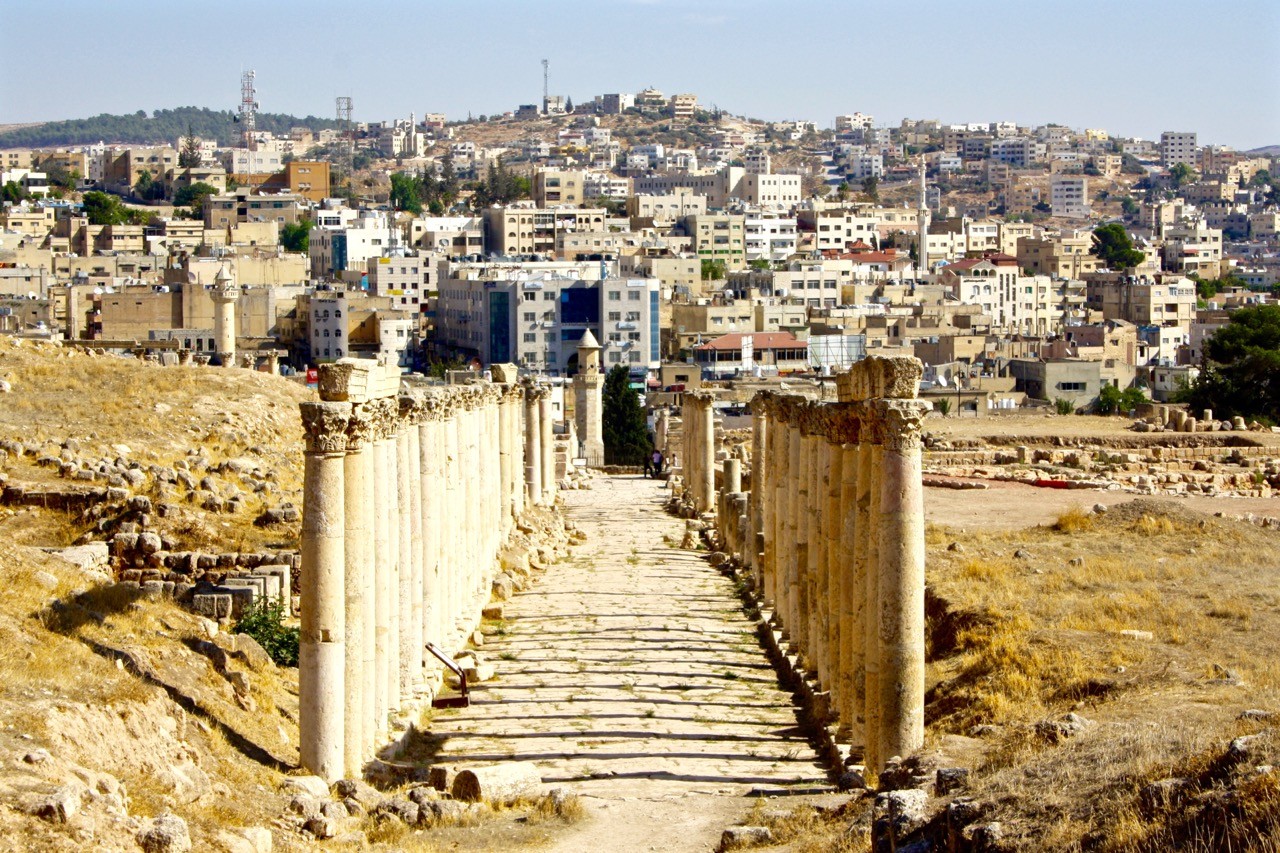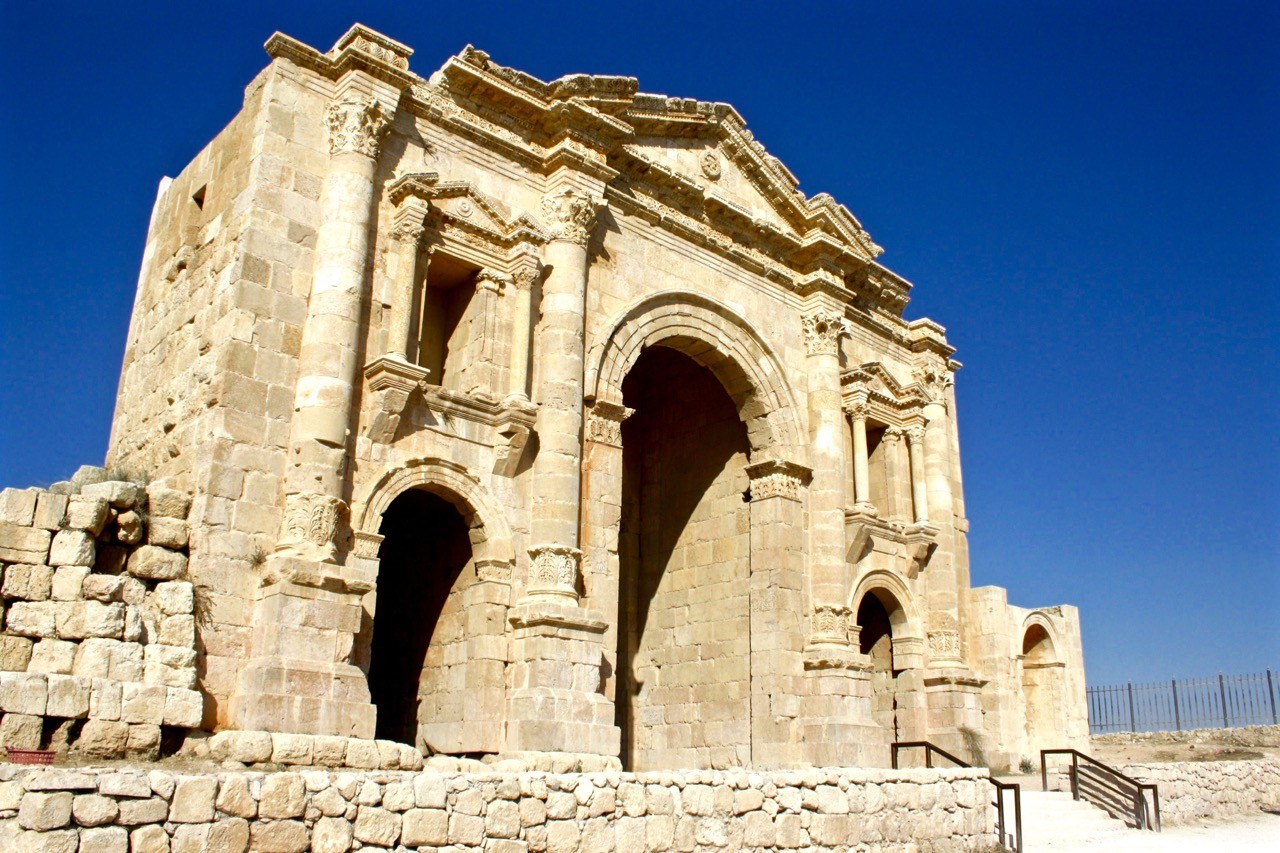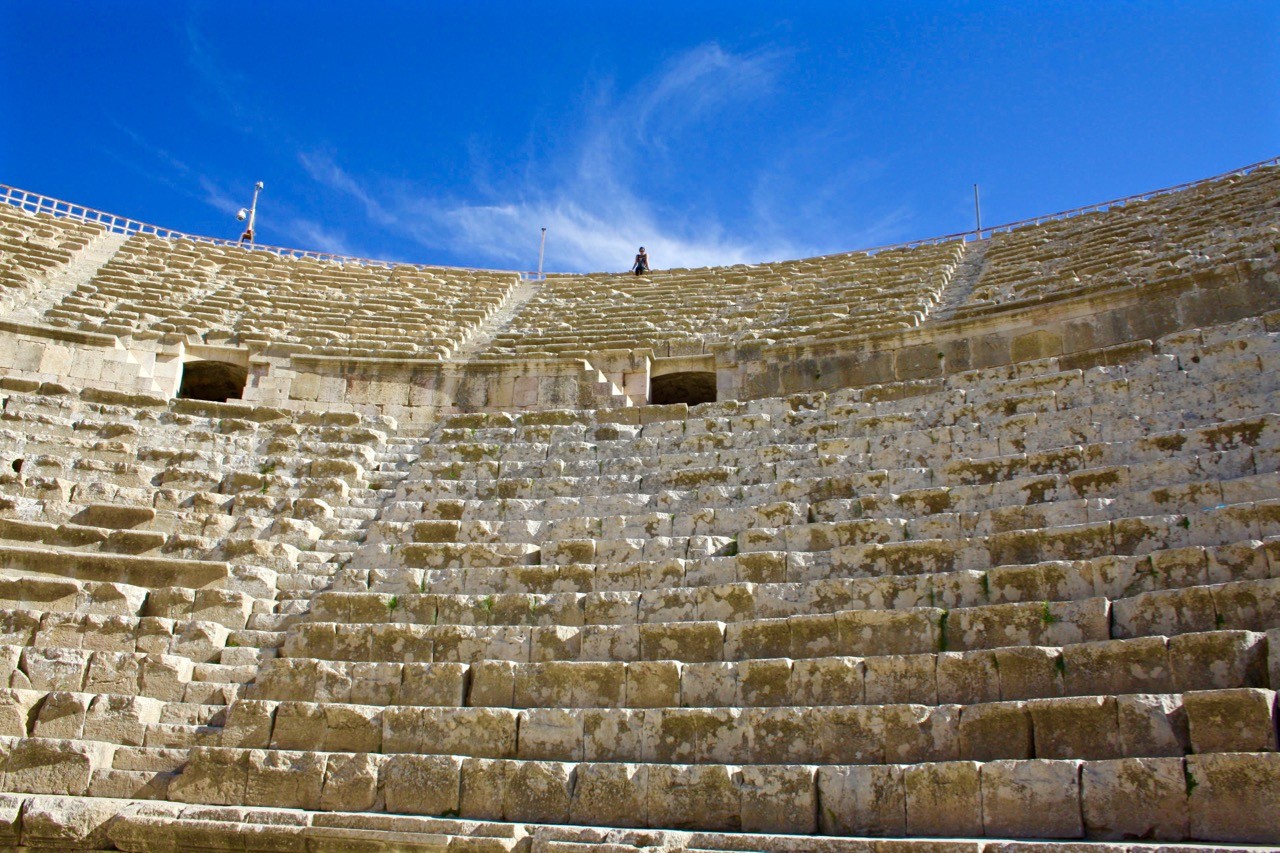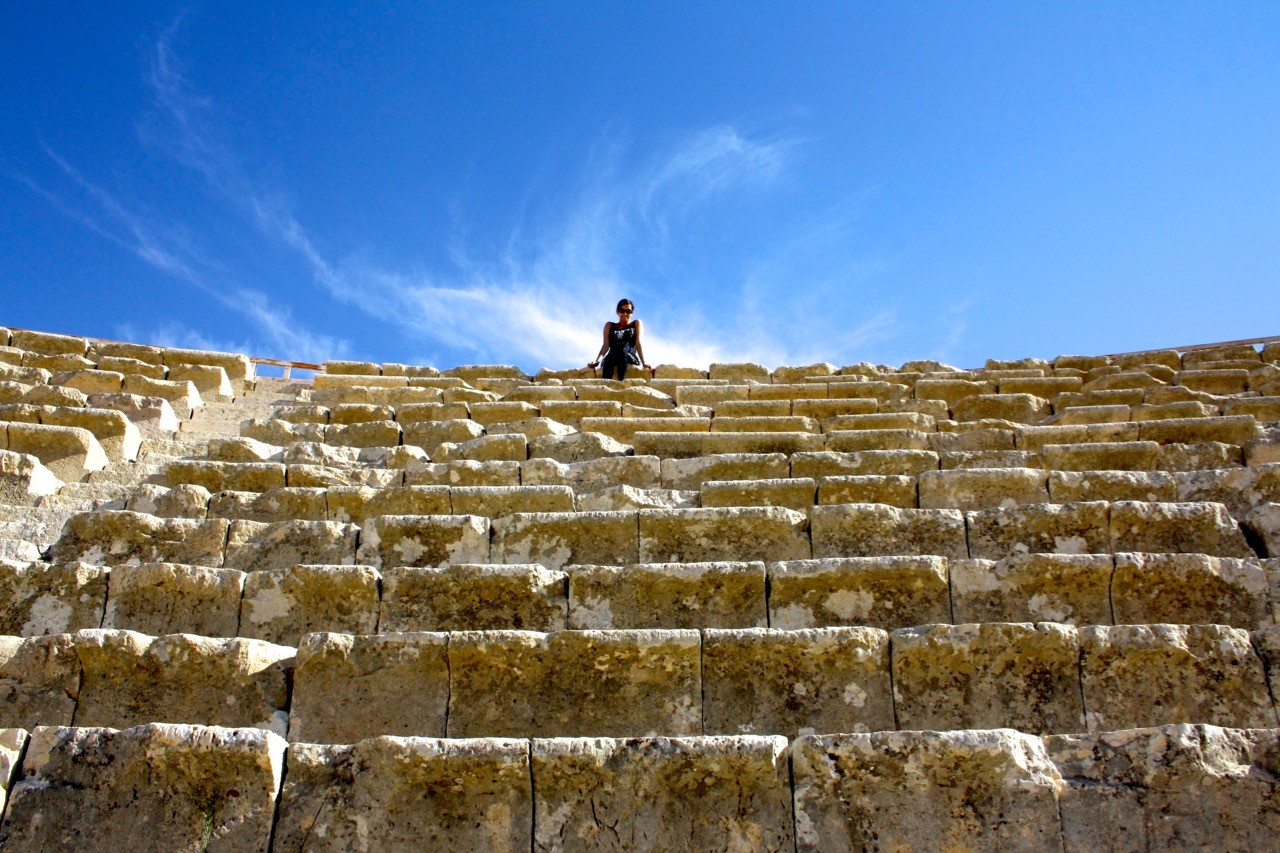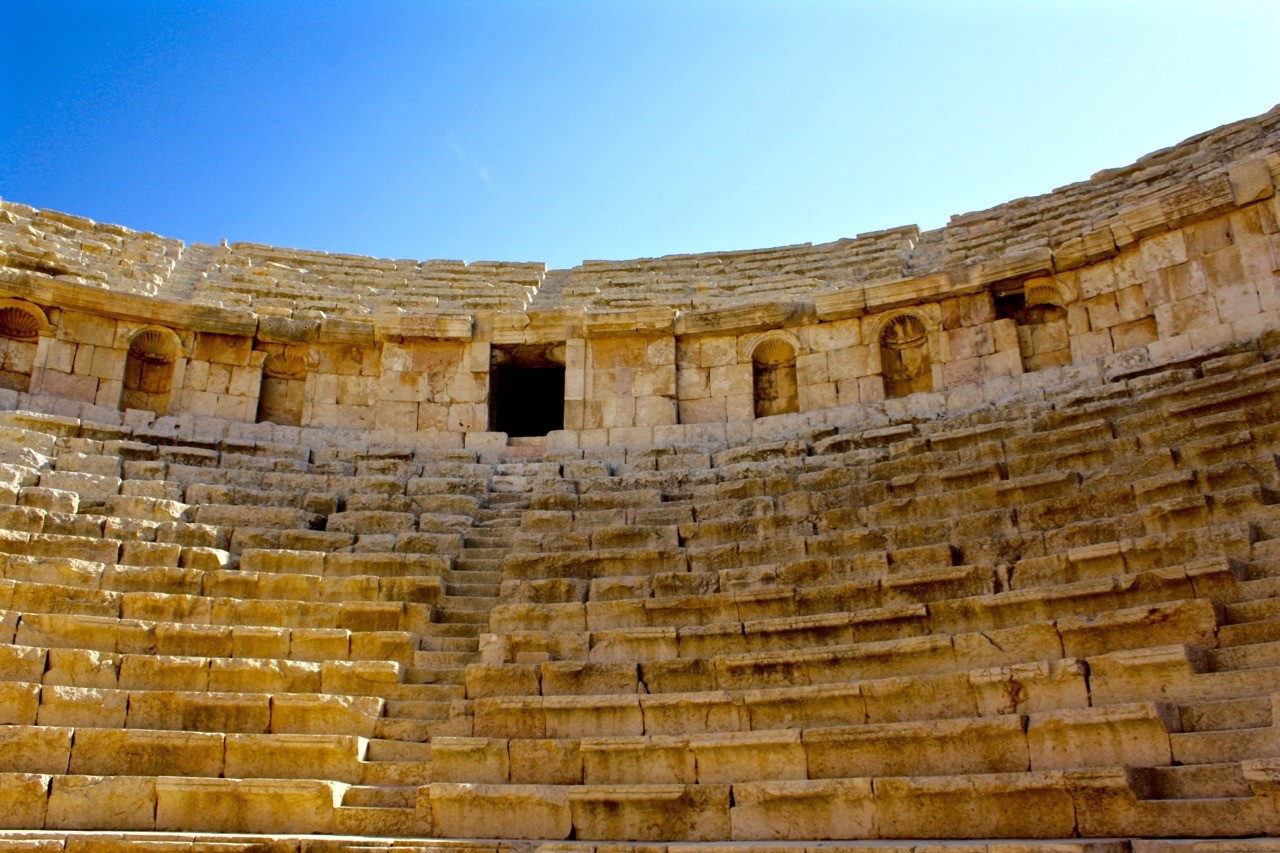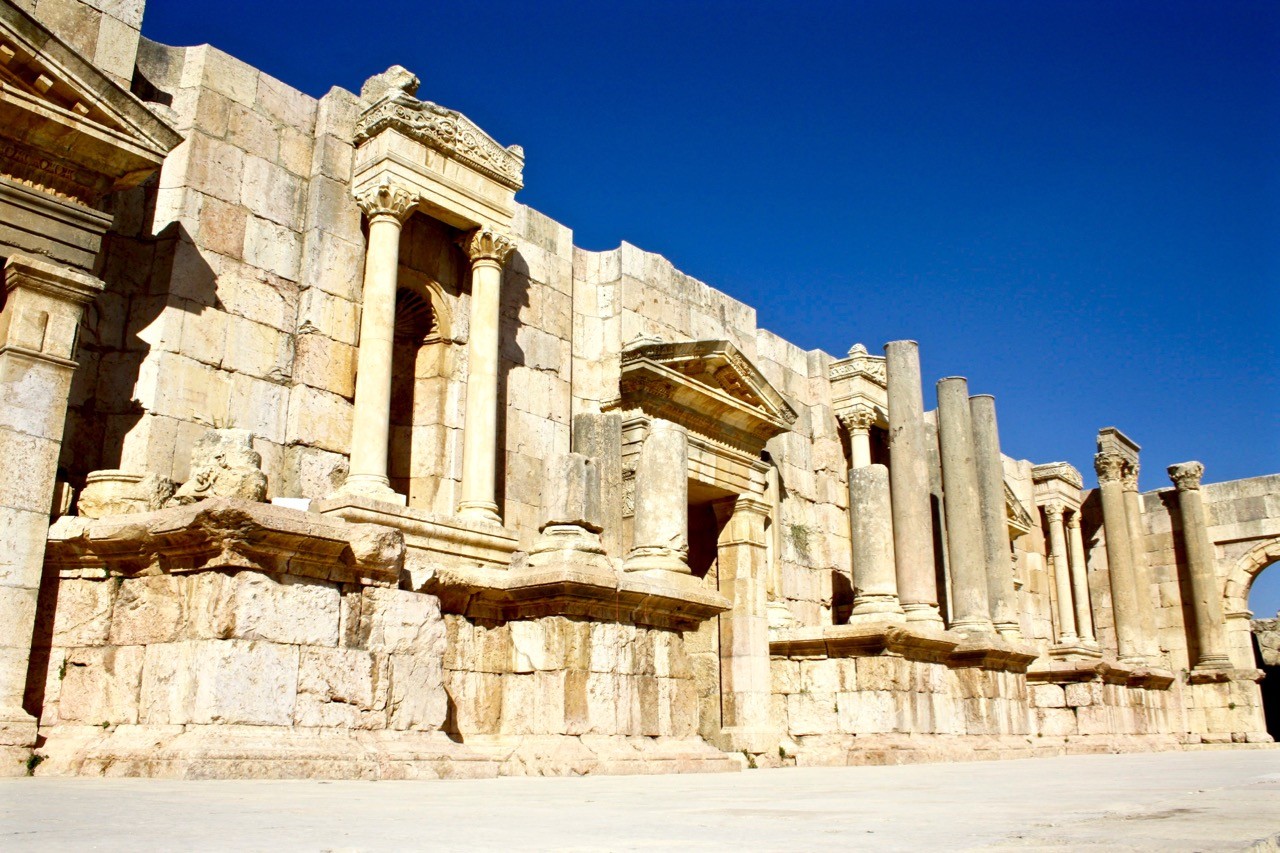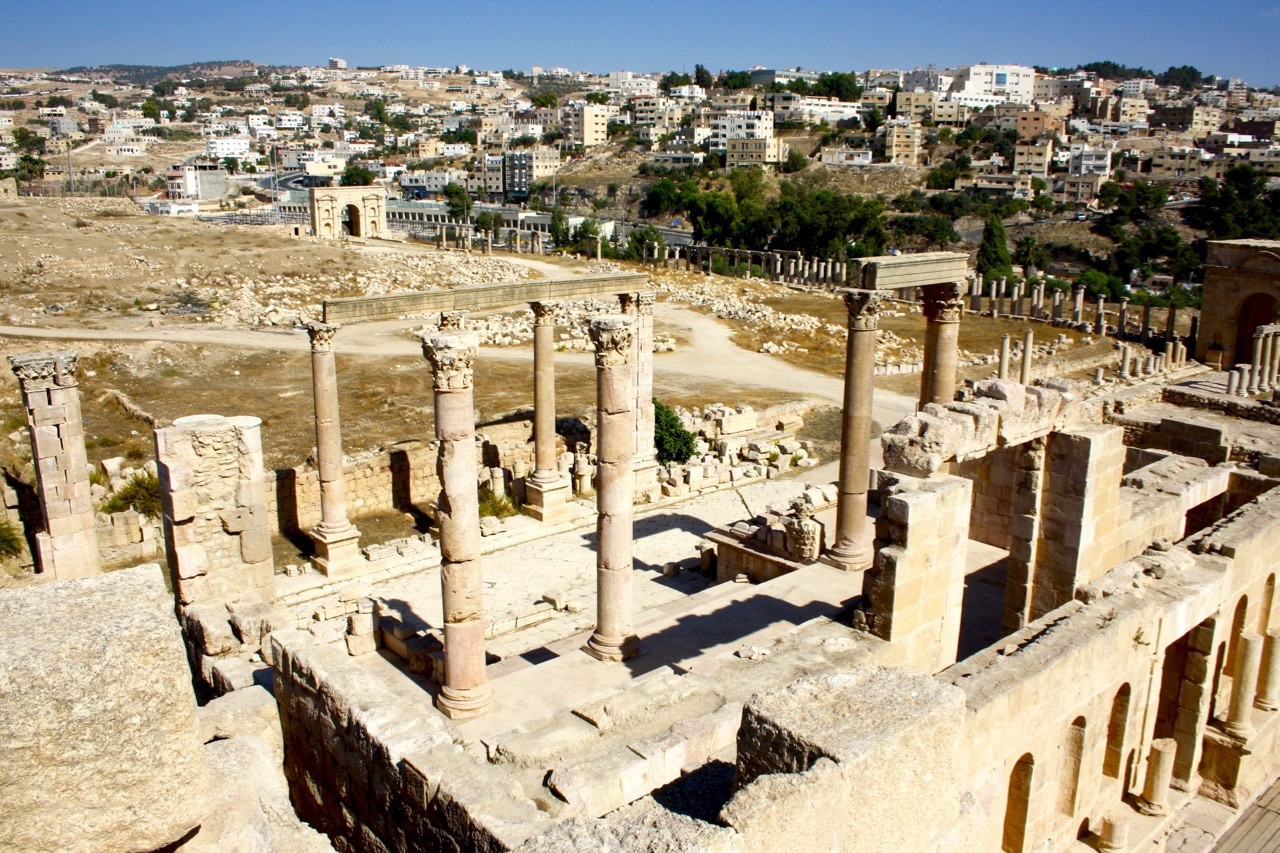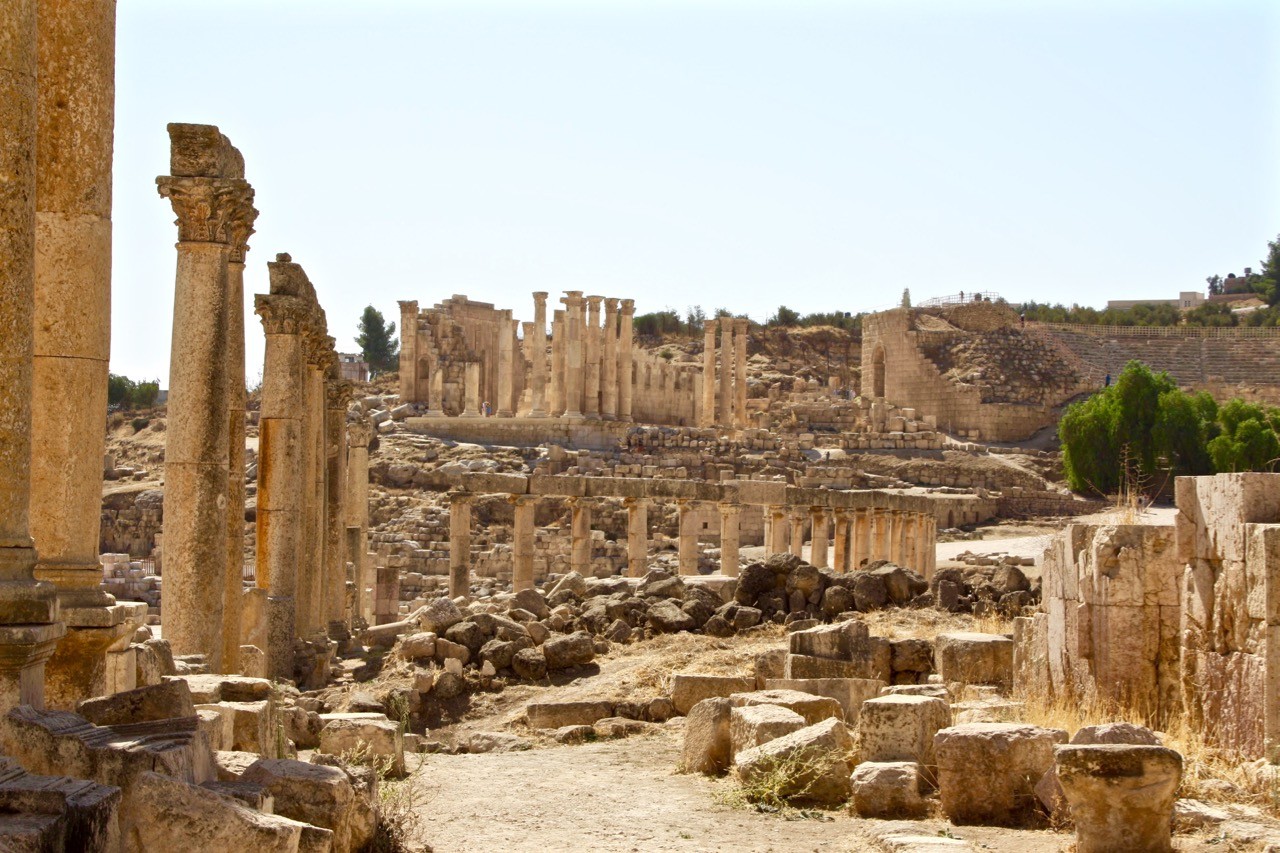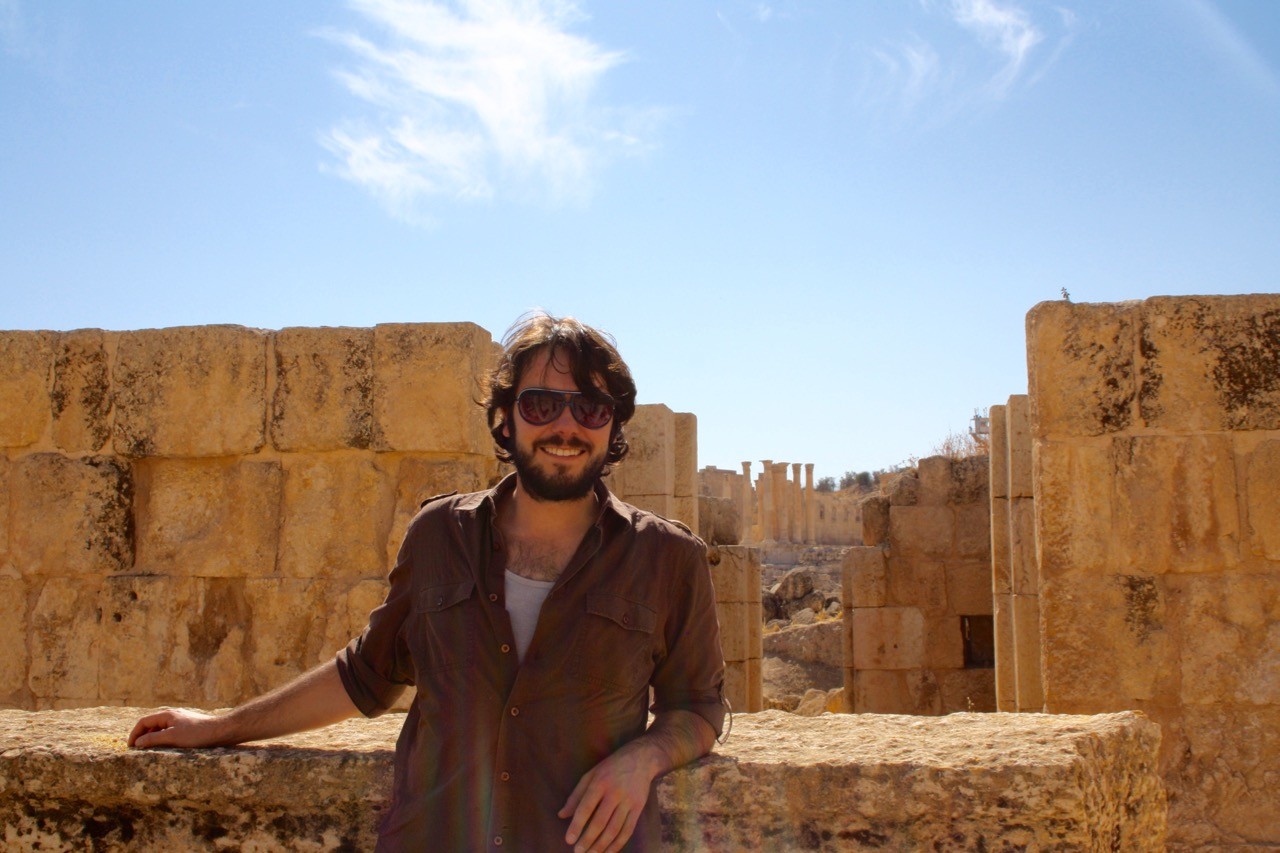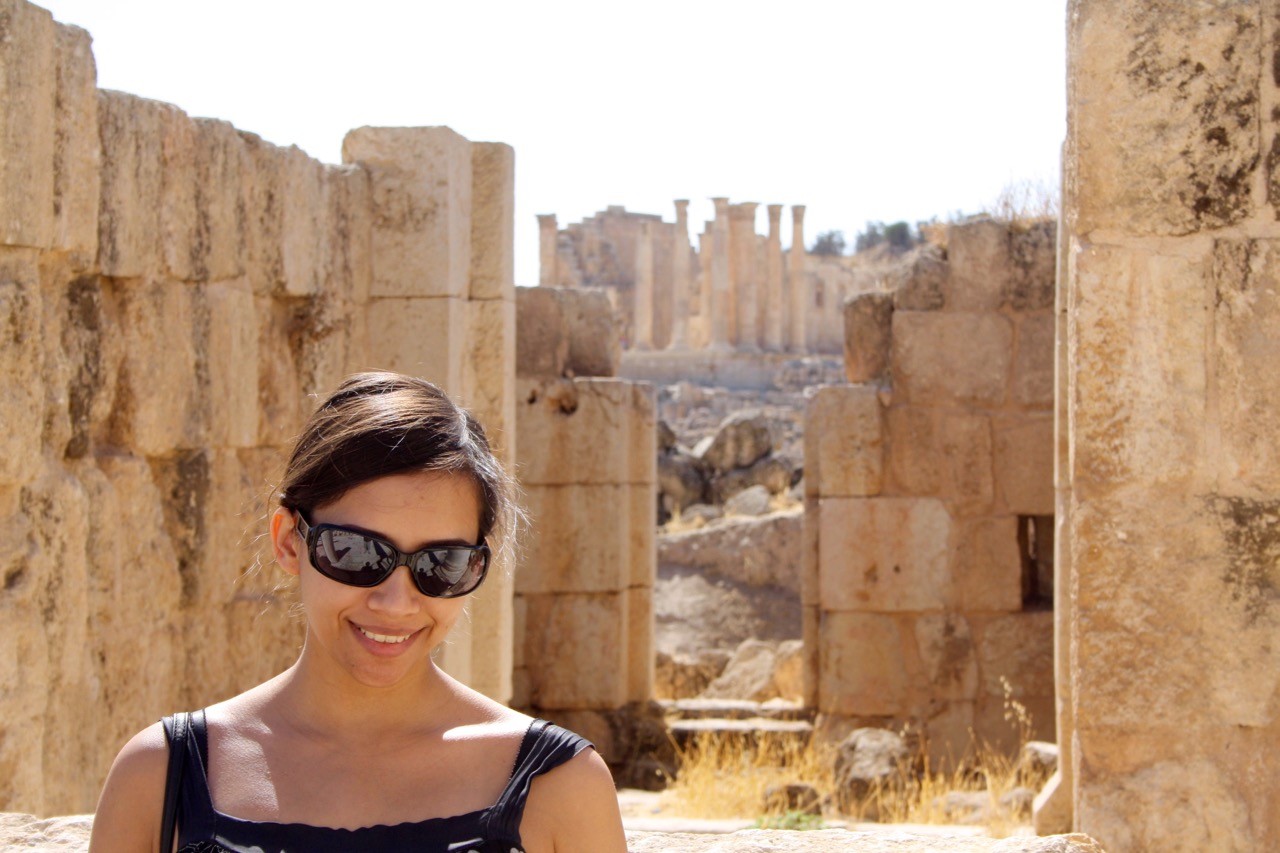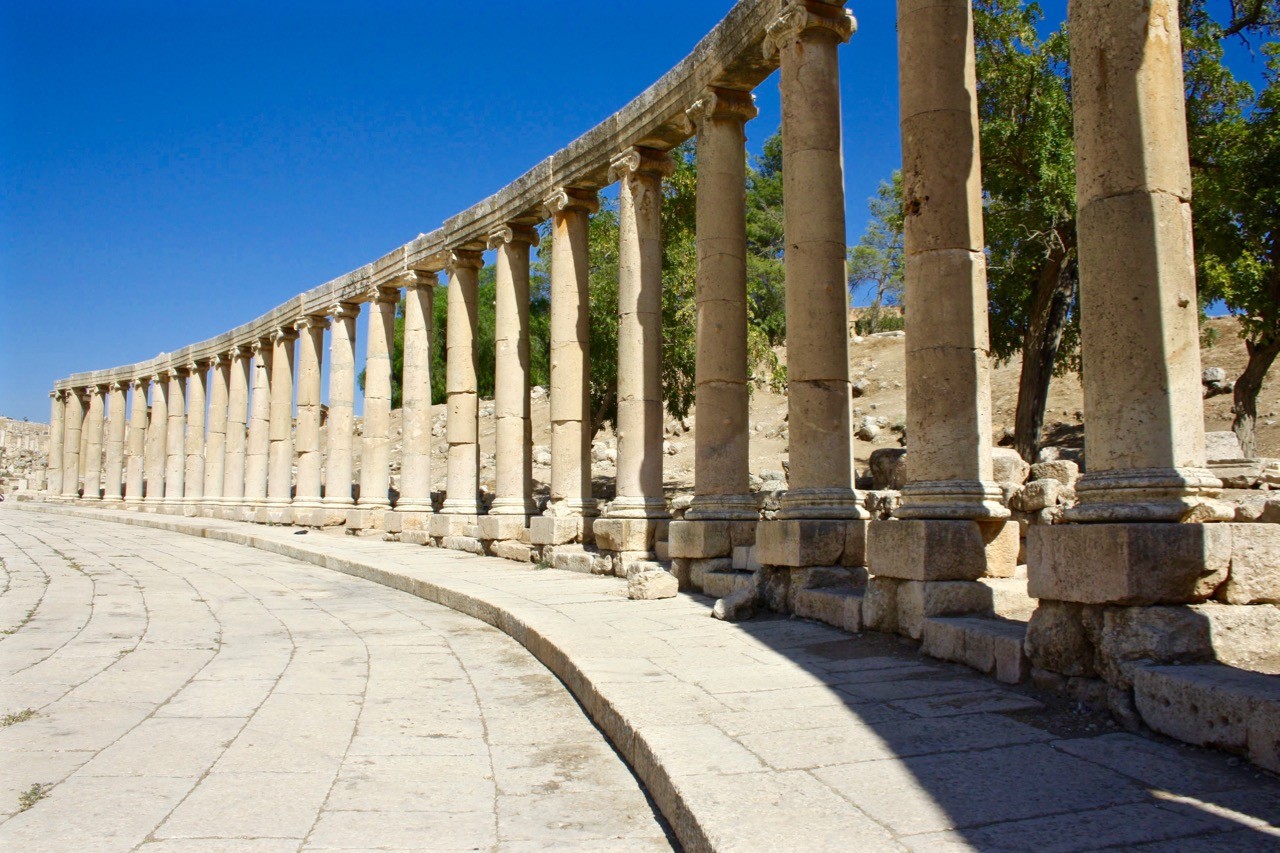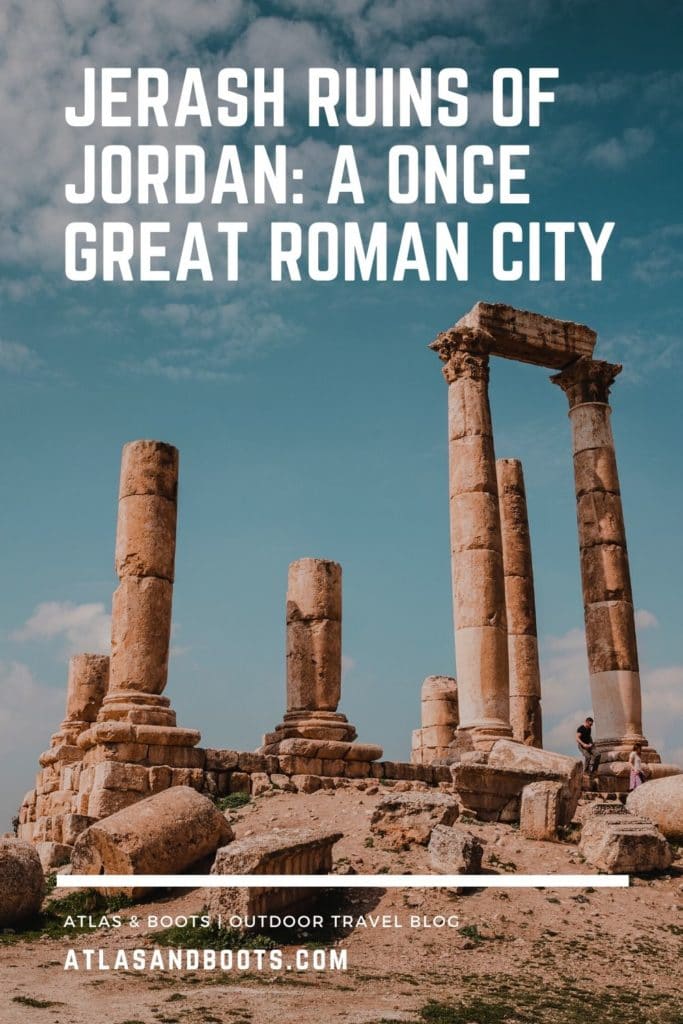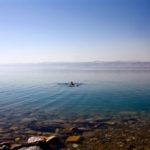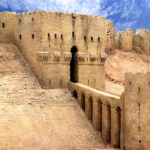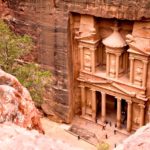The Jerash ruins of Jordan are said to be the best-preserved Roman ruins outside of Italy. At just 48km (30mi) north of Amman, it’s a great day trip from the capital.
The modern city of Jerash sits alongside Gerasa of Antiquity, an ancient city housing some of the finest Greco-Roman architecture in the world. The city is positioned in Jordan’s countryside of fertile rolling hills and valleys filled with olive, plum trees, fig trees, pine forests and wheat crops.
The ancient Roman city enjoyed great wealth and importance largely due to the area’s fertile lands and year-round fresh water supply. An earthquake hit the region in 749AD destroying huge areas of the city and leaving the ruins buried in soil for hundreds of years. It was in 1806 that German explorer Ulrich Jasper Seetzen discovered them while searching for Oriental artefacts as part of a private research commission.
After over 200 years of slow but steady excavation and the resettlement of today’s modern city across the wadi (valley), the area became the second biggest tourist destination in Jordan after Petra.
The site is easily visited in either a full or half-day trip from Amman and offers an excellent opportunity for visitors to piece together the ancient life that once flourished here. The fact that so many structures remain intact provides archaeologists, historians and even the casual visitor an excellent taste of Roman rule in the Middle East.
WHAT TO SEE
The Jerash ruins can be easily walked in a couple of hours and it’s hard to miss anything important. The most notable sites are:
- Hadrian’s Arch: built in 129AD, this marks the ancient city’s boundaries.
- Hippodrome: a restored Roman-era stadium. This was the smallest of the two arenas in the Roman Empire.
- Forum (Oval Plaza): this is the main attraction. Bordered by 160 Ionic columns, it literally cannot be missed!
- The Cardo: a 600m (1,968ft) colonnaded street running the length of the city.
- Temple of Artemis: impressive temple ruins dedicated to the Ancient Greek deity.
- Agora: once the city’s main food market positioned around a central fountain.
- Nymphaeum: an ornate public fountain decorated with lion heads and dedicated to nymphs.
- South Theatre: the larger of the two theatres, this can seat up to 3,000 people. The site is still used for concerts, performances and even the occasional chariot race!
- Jerash Archaeological Museum: houses a collection of artefacts such as coins, statues and sarcophagi found during the numerous excavations.
Atlas & BOots
Nearby to the Jerash ruins is Ajloun castle located amid the Ajloun Forest Reserve. It makes for a good stop on the return journey. The isolated woods of evergreen oak are also ideal for an afternoon walk.
Jerash ruins of Jordan: the essentials
What: Visiting the Jerash ruins of Jordan.
Where: We stayed at the Arab Tower Hotel in Amman. The hotel was simple but centrally located and comfortable with friendly staff.
When to go: Spring and autumn offer pleasant temperatures in Jordan, day and night. In winter (Jan-Feb), it can get chilly and rainy while the summer brings temperatures up to 38°C (100°F). Peak season is Feb-Mar and Oct-Nov so opt for mid-spring or early autumn.
How: From the Tabarbour bus station in Amman there are regular buses to and from Jerash that run throughout the day until late afternoon. Tickets cost 1 JOD (1-2 USD). If you start the day early you can also take a bus to Jerash via Ajloun and see the castle on the way. Taxis can be hired in Amman for 10 JOD (14 USD) one-way or around 40 JOD (56 USD) for the day.
Admission to the site costs 10 JD (14 USD) which includes the Jerash Archaeological Museum. Summertime hours are 7.30am to 7pm and 8am to 5pm in the winter. There are several international airlines that fly to Amman. Book via Skyscanner for the best prices.
Enjoyed this post? pin it for later…
Lonely Planet Jordan is a comprehensive guide to Jordan, ideal for those who want to both explore the top sights and take the road less travelled.
